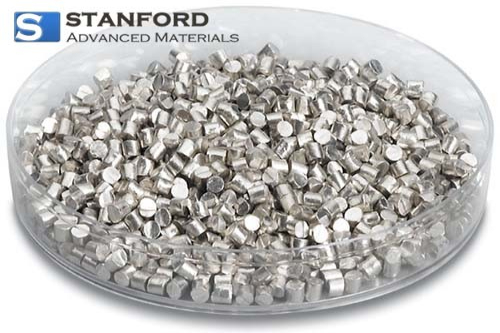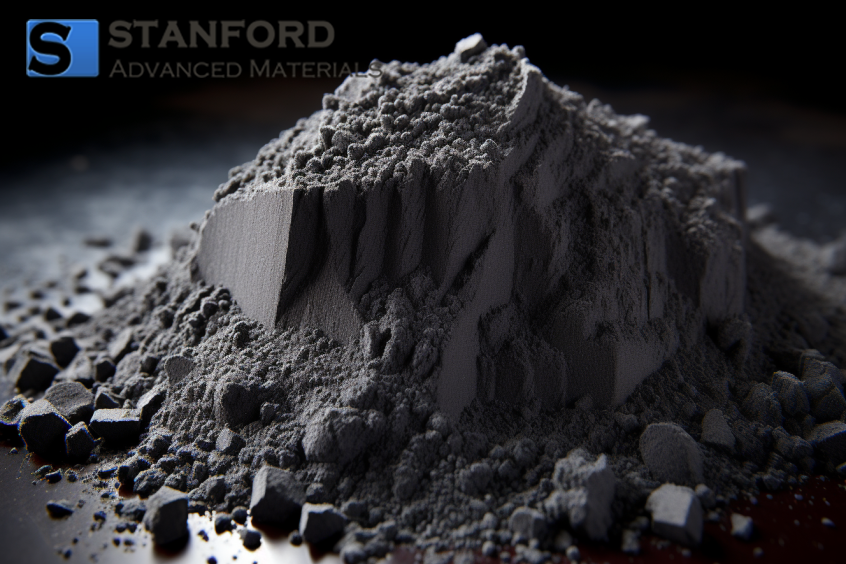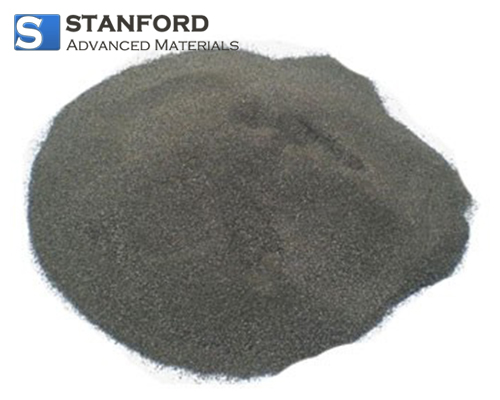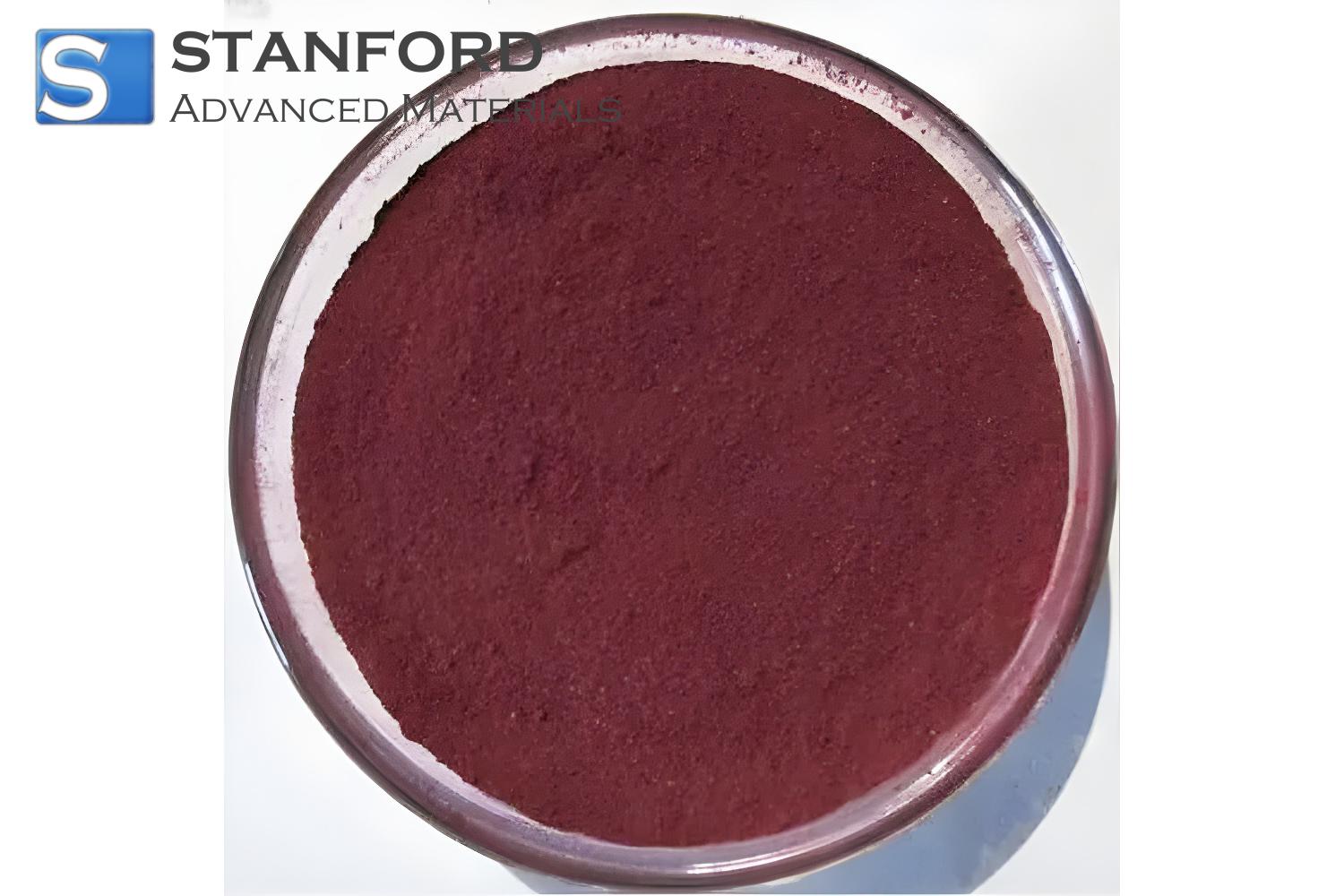SECTION 1. IDENTIFICATION
Product Name: Indium(III) Iodide
CAS #: 13510-35-5
Relevant identified uses of the substance: Scientific research and development
Supplier details:
Stanford Advanced Materials
E-mail: sales@samaterials.com
Tel: (949) 407-8904
Address: 23661 Birtcher Dr., Lake Forest, CA 92630 U.S.A.
SECTION 2. HAZARDS IDENTIFICATION
Classification of the substance or mixture GHS Classification in accordance with 29 CFR 1910 (OSHA
HCS) Skin sensitization (Category 1), H317 Reproductive toxicity (Category 2), H361
Signal Word Warning Hazard statement(s) H317 May cause an allergic skin reaction. H361 Suspected
of damaging fertility or the unborn child. Precautionary statement(s) P201 Obtain special instructions
before use. P202 Do not handle until all safety precautions have been read and understood. P261
Avoid breathing dust. P272 Contaminated work clothing must not be allowed out of the workplace.
P280 Wear protective gloves/ protective clothing/ eye protection/ face protection. P302 + P352 IF ON
SKIN: Wash with plenty of soap and water. P308 + P313 IF exposed or concerned: Get medical
advice/ attention. P333 + P313 If skin irritation or rash occurs: Get medical advice/ attention. P363
Wash contaminated clothing before reuse. P405 Store locked up. P501 Dispose of contents/ container
to an approved waste disposal plant. Hazards not otherwise classified (HNOC) or not covered by GHS
- none
SECTION 3. COMPOSITION/INFORMATION ON INGREDIENTS
Substances Formula : I3In Molecular weight : 495.53 g/mol CAS-No. : 13510-35-5 EC-No. : 236-839-6
SECTION 4. FIRST AID MEASURES
Description of first-aid measures General advice Show this material safety data sheet to the doctor in
attendance. If inhaled After inhalation: fresh air. In case of skin contact In case of skin contact: Take
off immediately all contaminated clothing. Rinse skin with water/ shower. Consult a physician. In case
of eye contact After eye contact: rinse out with plenty of water. Call in ophthalmologist. Remove
contact lenses. If swallowed After swallowing: immediately make victim drink water (two glasses at
most). Consult a physician. Most important symptoms and effects, both acute and delayed The most
important known symptoms and effects are described in the labelling (see section 2.2) and/or in
section 11 Indication of any immediate medical attention and special treatment needed No data
available
SECTION 5. FIREFIGHTING MEASURES
Extinguishing media Suitable extinguishing media Use extinguishing measures that are appropriate to
local circumstances and the surrounding environment. Unsuitable extinguishing media For this
substance/mixture no limitations of extinguishing agents are given. Special hazards arising from the
substance or mixture Indium/indium oxides Not combustible. Ambient fire may liberate hazardous
vapours. Advice for firefighters Stay in danger area only with self-contained breathing apparatus.
Prevent skin contact by keeping a safe distance or by wearing suitable protective clothing. Further
information Suppress (knock down) gases/vapors/mists with a water spray jet. Prevent fire
extinguishing water from contaminating surface water or the ground water system
SECTION 6. ACCIDENTAL RELEASE MEASURES
Personal precautions, protective equipment and emergency procedures Advice for non-emergency
personnel: Avoid inhalation of dusts. Avoid substance contact. Ensure adequate ventilation. Evacuate
the danger area, observe emergency procedures, consult an expert. For personal protection see
section 8. Environmental precautions Do not let product enter drains. Methods and materials for
containment and cleaning up Cover drains. Collect, bind, and pump off spills. Observe possible
material restrictions (see sections 7 and 10). Take up dry. Dispose of properly. Clean up affected area.
Avoid generation of dusts. Reference to other sections For disposal see section 13.
SECTION 7. HANDLING AND STORAGE
Precautions for safe handling Advice on safe handling Work under hood. Do not inhale
substance/mixture. Hygiene measures Immediately change contaminated clothing. Apply preventive
skin protection. Wash hands and face after working with substance. For precautions see section 2.2.
Conditions for safe storage, including any incompatibilities Storage conditions Tightly closed. Dry.
Storage class Storage class (TRGS 510): 11: Combustible Solids Specific end use(s) Apart from the
uses mentioned in section 1.2 no other specific uses are stipulated
SECTION 8. EXPOSURE CONTROLS/PERSONAL PROTECTION
Exposure controls Appropriate engineering controls Immediately change contaminated clothing. Apply
preventive skin protection. Wash hands and face after working with substance. Personal protective
equipment Eye/face protection Use equipment for eye protection tested and approved under
appropriate government standards such as NIOSH (US) or EN 166(EU). Safety glasses Skin
protection Handle with impervious gloves. This recommendation applies only to the product stated in
the safety data sheet, supplied by us and for the designated use. When dissolving in or mixing with
other substances and under conditions deviating from those stated in EN374 please contact the
supplier of CE-approved gloves Body Protection protective clothing Respiratory protection requiredwhen dusts are generated. Control of environmental exposure Do not let product enter drains.
SECTION 9. PHYSICAL AND CHEMICAL PROPERTIES
a) Appearance Form: powder Color: light yellow b) Odor No data available c) Odor Threshold No data
available d) pH No data available e) Melting point/freezing point No data available f) Initial boiling point
and boiling range No data available g) Flash point ()Not applicable h) Evaporation rate No data
available i) Flammability (solid, gas) No data available j) Upper/lower flammability or explosive limits
No data available k) Vapor pressure No data available l) Vapor density No data available m) Density
No data available Relative density No data available n) Water solubility No data available o) Partition
coefficient: n-octanol/water No data available p) Autoignition temperature No data available q)
Decomposition temperature No data available r) Viscosity No data available s) Explosive properties
No data available t) Oxidizing properties No data available Other safety information No data available
SECTION 10. STABILITY AND REACTIVITY
Reactivity No data available Chemical stability The product is chemically stable under standard
ambient conditions (room temperature) . Possibility of hazardous reactions No data available
Conditions to avoid no information available Incompatible materials Strong oxidizing agents
Hazardous decomposition products In the event of fire: see section 5
SECTION 11. TOXICOLOGICAL INFORMATION
Information on toxicological effects Acute toxicity Oral: No data available Inhalation: No data available
Dermal: No data available No data available Skin corrosion/irritation No data available Serious eye
damage/eye irritation No data available Respiratory or skin sensitization No data available Germ cell
mutagenicity No data available Carcinogenicity IARC: No ingredient of this product present at levels
greater than or equal to 0.1% is identified as probable, possible or confirmed human carcinogen by
IARC. NTP: No ingredient of this product present at levels greater than or equal to 0.1% is identified
as a known or anticipated carcinogen by NTP. OSHA: No component of this product present at levels
greater than or equal to 0.1% is on OSHA’s list of regulated carcinogens. Reproductive toxicity
Suspected human reproductive toxicant No data available Specific target organ toxicity - single
exposure No data available Specific target organ toxicity - repeated exposure No data available
Aspiration hazard No data available Additional Information To the best of our knowledge, the
chemical, physical, and toxicological properties have not been thoroughly investigated., Prolonged
exposure to iodides may produce iodism in sensitive individuals. Symptoms of exposure include: skin
rash, running nose, headache and irritation of the mucous membrane. For severe cases the skin may
show pimples, boils, hives, blisters and black and blue spots. Iodides are readily diffused across the
placenta. Neonatal deaths from respiratory distress secondary to goiter have been reported. Iodides
have been known to cause drug-induced fevers, which are usually of short duration., burning
sensation, Cough, wheezing, laryngitis, Shortness of breath, Headache, Nausea, Vomiting Stomach -
Irregularities - Based on Human Evidence Stomach - Irregularities - Based on Human Evidence
SECTION 12. ECOLOGICAL INFORMATION
Toxicity No data available Persistence and degradability No data available Bioaccumulative potential
No data available Mobility in soil No data available Results of PBT and vPvB assessment PBT/vPvB
assessment not available as chemical safety assessment not required/not conducted Endocrine
disrupting properties No data available Other adverse effects No data available
SECTION 13. DISPOSAL CONSIDERATIONS
Waste treatment methods Product Waste material must be disposed of in accordance with the national
and local regulations. Leave chemicals in original containers. No mixing with other waste. Handle
uncleaned containers like the product itself.
SECTION 14. TRANSPORT INFORMATION
DOT (US) Not dangerous goods IMDG Not dangerous goods IATA Not dangerous goods Further
information Not classified as dangerous in the meaning of transport regulations.
SECTION 15. REGULATORY INFORMATION
SARA 302 Components This material does not contain any components with a section 302 EHS TPQ.
SARA 313 Components This material does not contain any chemical components with known CAS
numbers that exceed the threshold (De Minimis) reporting levels established by SARA Title III, Section
313. SARA 311/312 Hazards Acute Health Hazard, Chronic Health Hazard Massachusetts Right To
Know Components No components are subject to the Massachusetts Right to Know Act.
SECTION 16. OTHER INFORMATION
Safety Data Sheet according to Regulation (EC) No. 1907/2006 (REACH). The above information is
believed to be correct but does not purport to be all inclusive and shall be used only as a guide. The
information in this document is based on the present state of our knowledge and is applicable to the
product with regard to appropriate safety precautions. It does not represent any guarantee of the
properties of the product.













 GHS07,
GHS07,  GHS08
GHS08